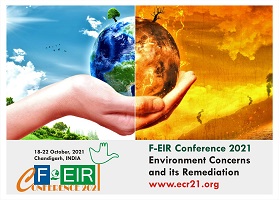Sustainability and Energy-Saving in Construction and Building Materials
A special issue of Sustainability (ISSN 2071-1050). This special issue belongs to the section "Sustainable Materials".
Deadline for manuscript submissions: closed (31 May 2022) | Viewed by 20685

Special Issue Editors
Interests: sustainability in construction and building materials; recycling; smart materials; smart buildings; energy-saving; green buildings; eco-friendly materials; nearly zero-energy buildings; energy efficiency; energy storage; phase change materials; renewable energy resources; zero CO2 emissions; CO2 storage in materials; modeling; multiscale; multiphysics; micro- and meso-scale
Special Issues, Collections and Topics in MDPI journals
Special Issue Information
Dear Colleagues,
The “Sustainability and Energy-Saving in Construction and Building Materials” Special Issue is aimed at collecting the current state of the art and novel achievements on relevant topics that deal with the field of both sustainability and energy-saving in construction and building materials. Thus, it will collect original manuscripts on current advances from physical, chemical, biological, life-cycle assessment, engineering, and materials science perspectives and research results related to sustainable, carbon-neutral, environmental-friendly, and energy-neutral topics on CBMs.
With this collection, Prof. Antonio Caggiano and Prof. Deepankar Kumar Ashish have the ambition to hugely stimulate and spread the latest knowledge on Sustainability and Energy-Saving in Construction and Building Materials. The SI will be a recipe for new ideas on the aforementioned topics for young investigators as well as leading experts in the field of materials science and engineering.
The Special Issue is also sponsoring the F-EIR Conference 2021—Environment Concerns and its Remediation, to be held on October 18–22, 2021, Chandigarh, India, https://ecr21.org/. Works and scientific contributions presented in this event will also be considered as potential manuscripts for this Special Issue.
Prof. Dr. Antonio Caggiano
Prof. Dr. Deepankar Kumar Ashishs
Guest Editors
Conference Information
Guest Editors will hold a meeting online on October 18–22, 2021, Chandigarh, India, on the topic of this Special Issue “Sustainability and Energy-Saving in Construction and Building Materials”. Please see details:
F-EIR Conference – Environment Concerns and its Remediation
Welcome more researchers to join us!
Manuscript Submission Information
Manuscripts should be submitted online at www.mdpi.com by registering and logging in to this website. Once you are registered, click here to go to the submission form. Manuscripts can be submitted until the deadline. All submissions that pass pre-check are peer-reviewed. Accepted papers will be published continuously in the journal (as soon as accepted) and will be listed together on the special issue website. Research articles, review articles as well as short communications are invited. For planned papers, a title and short abstract (about 100 words) can be sent to the Editorial Office for announcement on this website.
Submitted manuscripts should not have been published previously, nor be under consideration for publication elsewhere (except conference proceedings papers). All manuscripts are thoroughly refereed through a single-blind peer-review process. A guide for authors and other relevant information for submission of manuscripts is available on the Instructions for Authors page. Sustainability is an international peer-reviewed open access semimonthly journal published by MDPI.
Please visit the Instructions for Authors page before submitting a manuscript. The Article Processing Charge (APC) for publication in this open access journal is 2400 CHF (Swiss Francs). Submitted papers should be well formatted and use good English. Authors may use MDPI's English editing service prior to publication or during author revisions.
Keywords
- alternative binders
- bio-based cementitious materials
- CO2 uptake and cleaning
- CO2 storage
- eco-friendly solutions
- energy and buildings
- energy harvesting
- energy storage
- energy transformations
- European Green Deal
- functional nanomaterials
- heating and cooling
- intelligent materials and buildings
- life-cycle assessment
- multiscale and multiphysics
- natural composites
- phase change materials
- piezoelectric materials
- recycling/reusability
- renewable energy resources
- reuse of industrial wastes and by-products
- self-healing materials
- smart materials
- sustainable binders
- thermal comfort
- zero CO2 emissions
Benefits of Publishing in a Special Issue
- Ease of navigation: Grouping papers by topic helps scholars navigate broad scope journals more efficiently.
- Greater discoverability: Special Issues support the reach and impact of scientific research. Articles in Special Issues are more discoverable and cited more frequently.
- Expansion of research network: Special Issues facilitate connections among authors, fostering scientific collaborations.
- External promotion: Articles in Special Issues are often promoted through the journal's social media, increasing their visibility.
- e-Book format: Special Issues with more than 10 articles can be published as dedicated e-books, ensuring wide and rapid dissemination.
Further information on MDPI's Special Issue polices can be found here.






